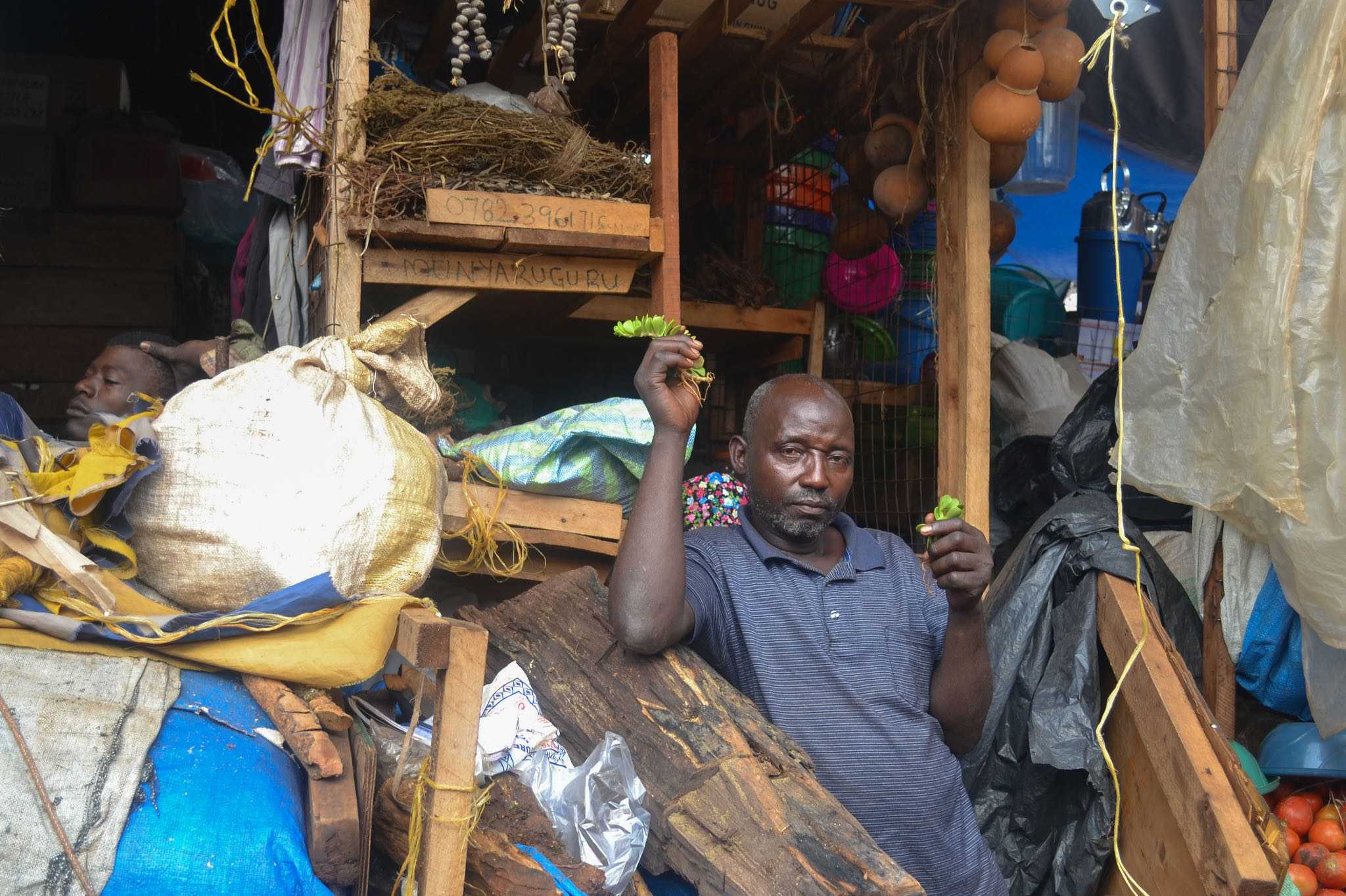
Apophia Agiresaasi, GPJ Uganda
Richard Otiti, center, from the Uganda Wildlife Conservation Education Centre, discusses snake species at the Makerere University School of Public Health in Kampala.
ISINGIRO, UGANDA — The family sat together one evening, huddled outside their house in Soroti district, when Augustine Opio suddenly screamed. Within minutes, it was clear that the 61-year-old had been bitten by a snake. He moaned and groaned. His feet turned red and swollen.
Tonny Opio, his younger brother, immediately took him to the nearest health center about 10 kilometers (6 miles) away. But when they managed to reach the center, the staff could not help because the center had no antivenom. Augustine Opio vomited and sweated profusely. By the time he and his brother reached a hospital, the snake venom had entered his bloodstream and he could barely breathe. Doctors put him on oxygen support, but before they could give him the antivenom specific to his bite, Opio was dead.
Across Uganda, getting bitten by a snake is nothing unusual. But Uganda’s Ministry of Health claims that from mid-2020 to 2022, there was an increase in the incidence of animal bites, including snakebites, and more people are dying of them. “This increase is because humans are encroaching on the habitat of snakes … by farming in swamps, clearing forests for farming,” says John Opolot, the ministry’s assistant commissioner of veterinary health and zoonoses.
In sub-Saharan Africa, where data is widely considered underreported, up to 1 million people are bitten by snakes each year, with estimates of 7,000 to 20,000 deaths annually, according to the World Health Organization. Many who survive are left with amputated limbs and other permanent disabilities.
In Uganda, 32% of households surveyed by Makerere University reported ever having a case of snakebite in the family. The survey conducted in 2020 put the incidence of snakebites at 101 per 100,000 people for the previous year. People who lived in rural areas were most vulnerable to snakebites, particularly those involved in agricultural work.
Yet despite the rise in snakebites, many health officials in Uganda are not trained to deal with the medical emergency, and only 4% of health facilities in the public, mission and private sectors stock antivenoms.
Up to 20% of the snake species in Uganda are venomous, says James Ntulume, a Kampala-based snake expert and conservationist.
Whether or not a snake is venomous can be determined by looking at its fangs, or the fang marks at the bite site. Two puncture wounds are indicative of venomous snakes while non-venomous snakes leave multiple bites, says Dr. Geoffrey Kasirye, medical superintendent of Mukono General Hospital in Uganda.
Only after his brother’s death did Tonny Opio learn that the snake that bit his brother was one of the most venomous. The Jameson’s mamba bite led to respiratory failure and paralysis of Augustine Opio’s skeletal muscles, key features of green mamba bites. “The venom slurs the speech, causing difficulty in breathing, and death is inevitable if not treated well and on time,” Kasirye says.
In 2017, the World Health Organization added snakebite envenomation to its priority list of neglected tropical diseases. A year later, Uganda came up with a national snakebite prevention and management strategy to address the issue. But the plan has yet to be implemented due to several challenges, including an unstable and inadequate antivenom supply chain. Opolot, from the Ministry of Health, says both the cost and unavailability of antivenoms in health facilities is the result of a lack of snake-specific data for the country.
Antivenoms cost between 100,000 and 150,000 Ugandan shillings ($27 to $40). Antimalarial drugs, by contrast, cost 20,000 shillings ($5). “The cost of antivenoms may be the equivalent of some drugs treating 100 malaria patients. It calls for a special project to handle availability of antivenoms,” Opolot says. “Some antivenoms are already available. … They only need to discuss how to ensure they reach the people who need them.” The ministry is developing a strategic plan that will help source funds, Opolot says.
But there is another dilemma facing most people who experience snakebites here. Common belief says that snakebites are a result of witchcraft or warnings from ancestral spirits. As such, many choose to first go to a traditional healer or herbalist, bypassing a hospital or clinic. “People believe it’s a local disease that can best be treated locally by traditional healers who have existed way before modern medicine came,” says Ali Nasasira, an herbalist of 25 years.



But Augustine Opio didn’t believe any of this. Before he was taken to the hospital, his family tried to convince him to apply some traditional medicines on the bite. Tonny Opio says they even offered him green tobacco leaves, a common traditional medicine, to swallow, but he declined. Bitten late in the day in a remote village, with no hospital in proximity and no antivenom available at the nearest health center, the Opio family knew they were fighting against the odds.
While proximity to a hospital and access to appropriate treatment remains a concern, as does the supply of antivenoms, Richard Otiti, from the government-operated Uganda Wildlife Conservation Education Centre, says there are still ways people can protect themselves. That includes wearing proper footwear, like gum boots, and becoming more careful around specific periods of time when the chance of a snakebite increases, such as during rainy seasons, after bush-burning, the half-hour before darkness and two hours after darkness.
Apophia Agiresaasi is a Global Press Journal reporter based in Kampala, Uganda.







